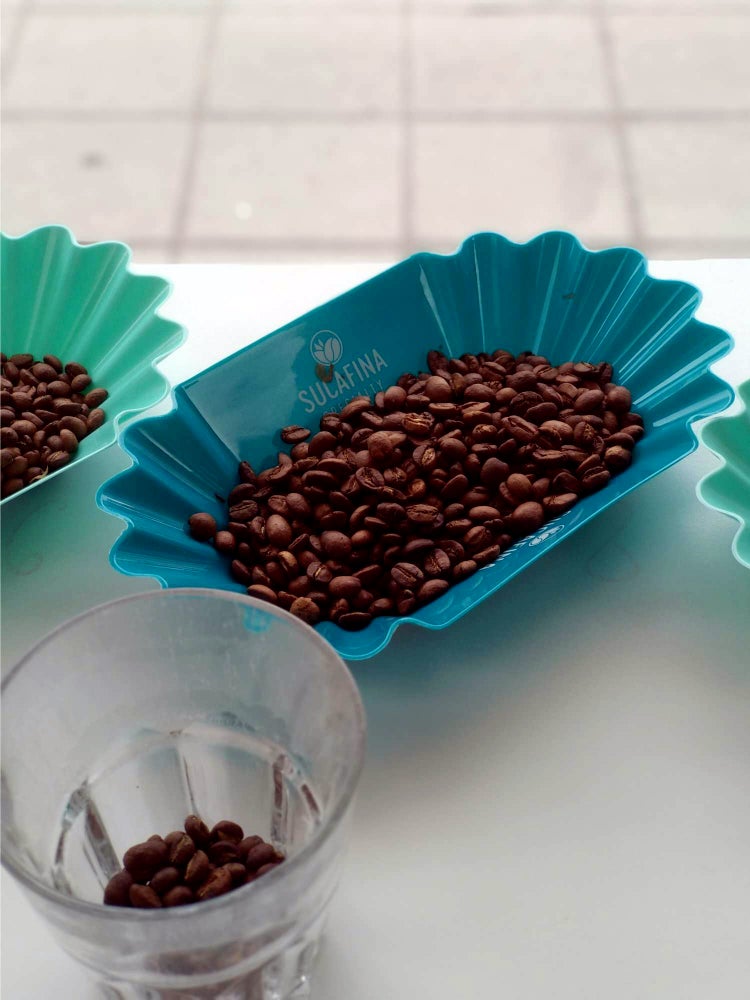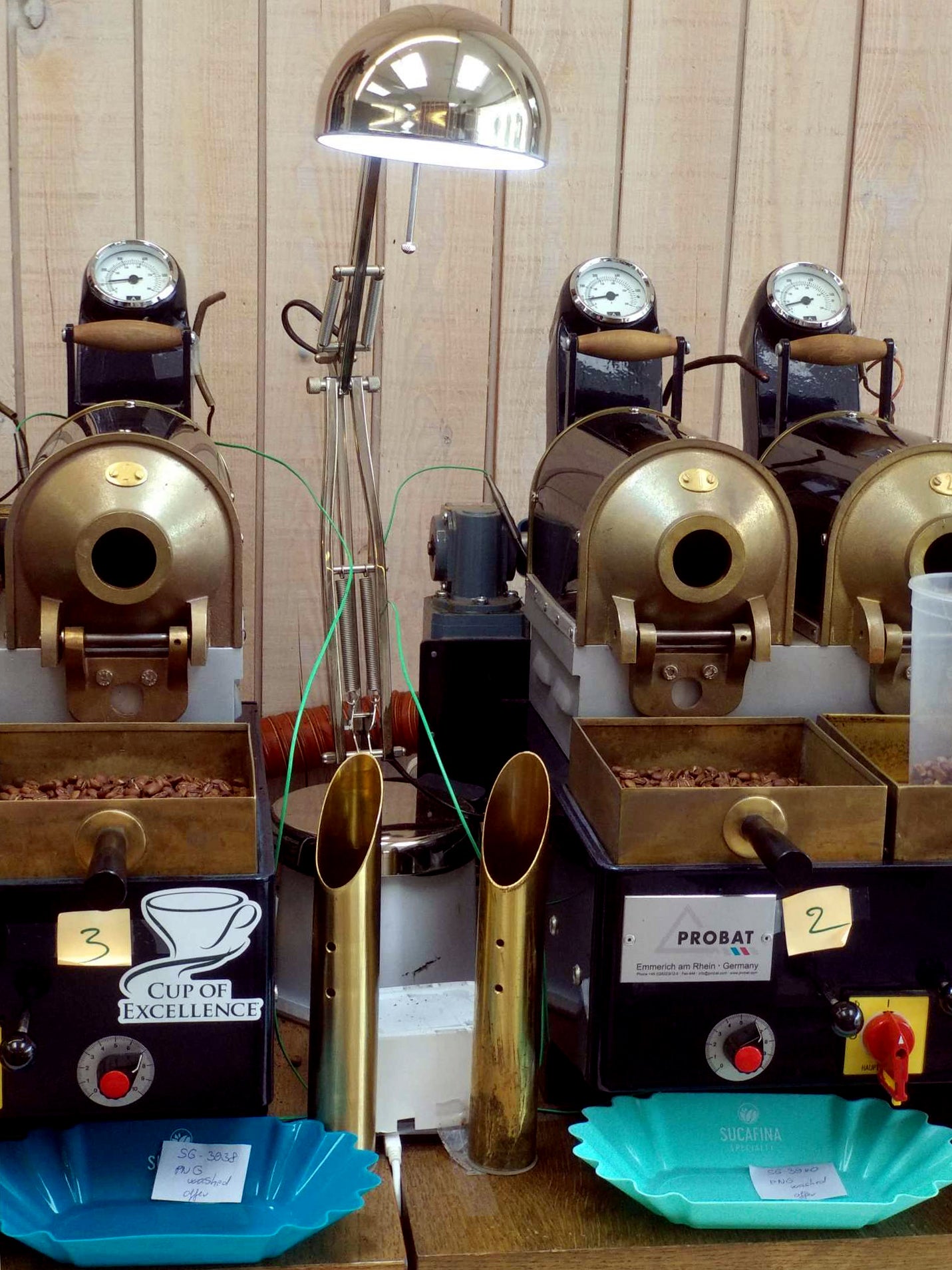From the Lab, Resources for Roasters
Tuesday, April 28, 2020
Sample Roasting: Our Theory
We all know production roasting is difficult to master. Sample roasting is also hard, but in its own way. The skills needed to do each kind of roasting well overlap, but each also has its own unique knowledge sets. A mastery of both production and sample roasting is a recipe for success.

This is the first installment in our new series about sample roasting.
To guide us, we’re lucky to have a master of both roasting styles, Jasper De Clerck — previously Head Roaster at The Barn and currently Founder and Roaster at Tāne Roasters Collective. Jasper just so happens to also be a core member of our QC team.
If production roasting is the bread and butter of a roastery, sample roasting is that perfect chocolatey spread that is always hard to find but it makes your bread out-of-this-world AMAZING.
When admiring a great coffee roaster, most of us only see the skill it takes to turn green beans brown and make them taste good. But one of the most important aspects of being a great roaster is selecting the right raw material in the first place. This is where your skills as a sample roaster become more important than your mastery of production roasting.
Sample roasting and production roasting are difficult in very different ways. The skills overlap but are utilized to achieve different goals. To be a successful coffee roaster, a mastery of both is key.

Our Roasting Theory
We can describe our sample roasting in 3 words: transparency, repeatability, adaptability.
Transparency
We keep our sample roasts simple. Our roast profiles are low-intervention to help fully develop the coffee without altering the flavor.
The most important thing about sample roasting is that it should allow us to see all the characteristics of a given coffee, whether they’re pleasant or not.
The roast shouldn’t mask any unpleasant flavors that are present in the green coffee. At the same time, it should be skillful enough to avoid flavors, such as ashy, baked or roasty, that originate from poor roasting practices.
Repeatability
The way we roast must be repeatable. Every time we roast a sample for re-evaluation, or any other reason, the result should be as close to identical as possible to previous roasts.
This way if we detect flavor differences between the current roast and any previous cuppings, we know that the disparities are not due to roasting differences.
We also need to maintain consistency between different coffees. Without consist roast levels, it becomes difficult to compare coffees to one another.
Adaptability
Most of the coffees that we sample-roast are new to us. This has given us the opportunity to develop profiles that can adapt to a wide variety of coffees.
While we have a variety of roast profiles to fit the full range of coffees that we roast, we also need to be able to adapt in the moment to any changes that occur during the roast. Coffee is unique and even with a roast profile, each coffee reacts in its own way.
This is why we have structured our profiles to give us a clear indication of how to start and end the roast with opportunities to alter everything in between according to how the coffee reacts.
Of course, the middle of the roast is where the magic happens and it’s also where the roaster’s senses become very important.

We’re elated to have Jasper’s expertise guide this series. In the coming weeks, Jasper will help us cover:
- Our Roasting Practice
- Parameters in Sample Roasting
- Roasting for macrolots and microlots
- Key differences between production roasting and sample roasting